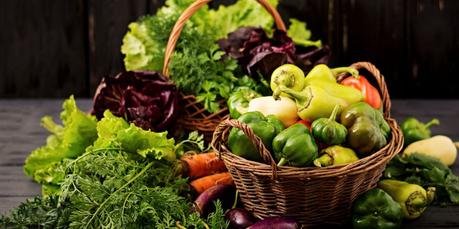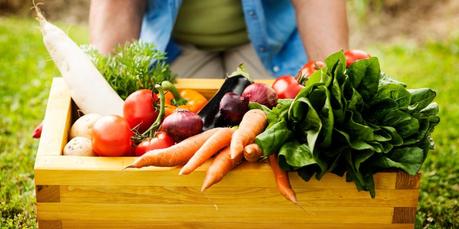
Starting your journey as a gardener can be overwhelming, but it doesn't have to be frustrating. Begin with easy-to-grow, low-maintenance vegetables to build your skills gradually. As a former beginner gardener, I focused on a select few veggies, making the learning curve manageable. Once you grasp the basics, you can expand to grow a year's worth of vegetables for your family!
1. Leafy Greens:
Leafy greens like spinach and lettuce are staples in our home throughout the summer. They thrive in cooler temperatures, making them suitable for both spring and fall gardens. Swiss chard is a personal favorite for its fuss-free growth. Start seeds indoors or sow directly in the garden, ensuring gentle care for fragile seedlings. Proper watering and strategic planting can help you enjoy a continuous supply of nutritious greens.
2. Tomatoes:
Tomatoes, the darlings of gardens, are ideal for beginners. They thrive in warm weather and sunshine. Starting seeds indoors enhances the growing season. Regular watering and support with cages or strings ensure a bountiful harvest. Combat unseasonably dry weather with strategic stone placement, preserving precious water for your tomato plants.
3. Pumpkins and Winter Squash:
Squash, especially pumpkins, is perfect for novice gardeners. They need ample space as they vine through the garden. Varieties like butternut, spaghetti, and acorn squash are easy to grow and popular in the fall. Preserve winter squash for months to enjoy their flavors during the winter scarcity. Plant seeds following the last frost date, ensuring well-draining soil and slow, deep watering.
4. Cucumbers:
Growing a plentiful cucumber harvest is a breeze with just a few healthy plants. Trellises keep them off the ground, and a sunny spot with well-draining soil is key. Starting seeds indoors ensures a head start. Due to their high water content, daily watering is crucial for a thriving cucumber crop. Embrace the vertical growth by weaving their vines up a trellis.
5. Peppers:
With their diverse shapes and colors, peppers bring joy to any garden. They don't demand much space, making them suitable for small beds or containers. Bell peppers, poblano, cayenne, and jalapeno are common varieties to consider. Start seeds indoors for an early harvest, and once temperatures rise, transplant them to the garden. Mulching and regular watering ensure optimal growth.
6. Carrots:
Carrots are beginner-friendly and thrive in containers with sufficient depth. Tiny seeds should be directly sown, and spacing is crucial to prevent weed competition. Deep watering is essential for encouraging robust root growth. A soaker hose facilitates targeted watering. After 6-8 weeks, harvest your carrots and marvel at the variety of shapes and sizes.
7. Peas:
Peas, often the first spring harvest, bring a burst of green to the garden. Directly sow seeds before the last frost for a spring harvest or 6-8 weeks before fall frost for autumn picking. Grow them in well-draining soil, and water when the soil is slightly dry. Handpick weeds to protect the delicate pea plants, encouraging continuous pod production.
8. Zucchini and Summer Squash:
Zucchini, a type of summer squash, is versatile and grows rapidly. Both vining and bush varieties flourish in consistently moist soil and full sun. Plant indoors or directly in the ground, but beware of squash bugs, a notorious pest. Combat them with natural pesticides or, my preference, handpicking them off.
9. Beets:
Overlooked by many beginners, beets are fast growers in loose, well-draining soil. Sow seeds in early spring and late summer, keeping the soil moist. Harvest beetroots within 50-70 days and store them separately from their greens for extended freshness.
10. Onions:
Onions, a staple in many households, have a long growing season. Choose between starting from seeds or bulb sets. Adding compost between rows helps maintain soil moisture. Harvest when the tops dry, usually in late summer or early fall.
11. Green Beans or Pole Beans:
Green beans and pole beans are kid favorites, growing quickly and thriving in full sun. Whether started indoors or directly sown, they require consistent watering. Harvest firm beans every two days to encourage continuous production.

Gardening Basics for Beginners
To master the basics of organic gardening, follow these general tips:
- When to Start a Garden: Begin seeds indoors 6-8 weeks before the last frost date. Harden off seedlings by exposing them gradually to outdoor conditions.
- What You Need: A few seed packets, a small plot of land, shovels, a hoe, and a watering can or hose. Consider container gardening or community gardens if space is limited.
- Start Small: Focus on a few vegetables you enjoy. Master the basics before expanding your garden.
Conclusion
Embark on your gardening journey with confidence by choosing beginner-friendly vegetables. Enjoy the process, learn as you go, and savor the bountiful harvest from your efforts.
Frequently Asked Questions (FAQs)
Q: Can I start a garden without a large plot of land?
A: Absolutely! Beginners can successfully garden with small plots, containers, or even community gardens.
Q: How do I protect my plants from pests like squash bugs?
A: Consider natural pesticides or handpicking pests. Vigilance is key to a healthy harvest.
Q: What's the best way to water vegetables without causing root rot?
A: Water consistently but avoid overwatering. Planting in mounds or hills can help the soil dry out faster.
Q: Can I grow vegetables in a container garden?
A: Yes, container gardening is a great option for beginners with limited space.
Q: How can I ensure a continuous harvest of peas or beans?
A: Harvest regularly, every two days, to encourage the production of new pods.

